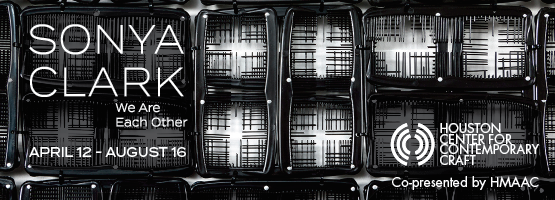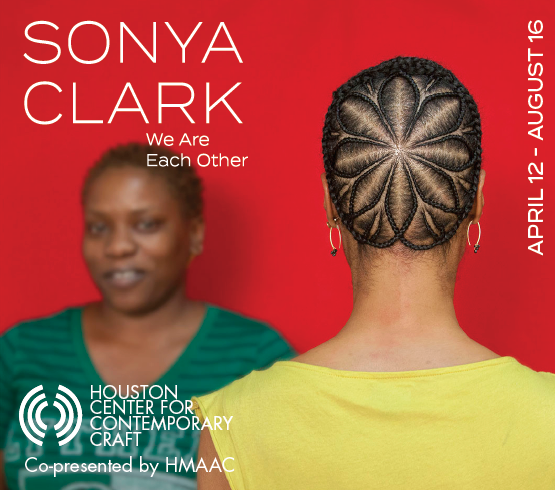The everyday is extraordinary, or so it seems in artist Nic Nicosia’s exhibition homemade stories 2020-2021, on view at Erin Cluley Gallery through Nov. 13. Surreal colors, unusual characters, and skewed perspectives all point to a rich, interior world of surprise and imagination.
As the exhibition title indicates, Nicosia created the works in 2020 and 2021 through his process of creating and collaging staged photographs using the rooms in his home as setting and muse.
“I don’t really tell anyone anything about what they should know about my work,” he says. “It’s always best for an audience to come to conclusions on their own and bring their own life stories to it.”
Nicosia, an established, lauded, influential artist, has always worked with photography and, most often, architecture. Using his degree in Radio-TV-Film from the University of North Texas, he has a “cinematic mind-set” when it comes to still images. He is recognized as a pioneer of the staged photographic movement of the 1980s.
“At the time, I just went out and shot traditional photographs—I photographed old farmhouses. A print was made of a selected image, then I would draw and paint on it, collage on it, and then re-photograph the collage. And that’s the work that was exhibited,” he says. “So if you were to walk into a gallery space or saw it hanging on the wall, it would just look like a picture of this little farmhouse. However, upon closer inspection, the changed information would become apparent.”

1 ⁄7
Nic Nicosia
homemade #1, 8.17-9.3.2020, 2020 Edition 1 of 3
archival inkjet
53 x 40 in
60.5 x 47.5 in Framed

2 ⁄7
Nic Nicosia
mondo grass with bugs, 6.22-7.30.2020, 2020 graphite and ink on Stonehenge
30 x 22 in
35 x 27 in Framed

3 ⁄7
Nic Nicosia
mehands #1, 2.5-15.2021, 2021 graphite and white conti on Bristol 45 x 32 in
50 x 37 in Framed

4 ⁄7
Nic Nicosia
dreamboat #25 3.6-4.23.2020, 2020 paperclay, copper, wood, acrylic paint 30 x 15 x 5.75 in

5 ⁄7
Nic Nicosia
homemade #2, 9.5-14.2020, 2020 Edition 1 of 3
archival inkjet
60 x 40 in
67.5 x 47.5 in Framed

6 ⁄7
Nic Nicosia
bighands at-ease, 2.17-3.24.2021, 2021 paperclay, hydrocal, aluminum, epoxy glue 16 x 9 x 4 in

7 ⁄7
Nic Nicosia
dreamboat #31, 7.16-8.5.2020, 2020
paperclay, aluminum, copper, acrylic paint, waxed wood
20 x 14 x 3 in
The works in homemade stories 2020-2021 feature vignettes of sorts, interior scenes of different rooms in Nicosia’s Dallas home. By combining photography with drawing and collage, furniture seems to come alive with pareidolia (the phenomena of seeing faces in inanimate objects), emphasized through charmingly crude illustrations of almond shaped eyes and thickly lined eyelashes. Candlesticks boast glowing flames in risky places, months hover flat against the wall, framed artworks dominate the dining area, oversized flowers pepper the corners and surfaces, pets make off stage appearances with hand-drawn mask-like faces, baseboards and window sills become stages for insect processions, peering eyes and eerily consistent weather fill (or obscure) the view from the windows.
And then there’s Nicosia’s use of color.
Known by many for his use of black and white, the artist had fun returning to and playing with high chroma color and dramatic, impossible lighting for homemade stories 2020-2021. Nicosia uses the two elements to play off with the architecture’s character, hinting at previous or future activities. (In my mind, it’s similar to that feeling of, as a kid, suspecting that my toys were talking to each other or running around the room a split second before I walked in. Rooms can hold memories, and keep secrets.)
“Architectural elements have always been an important part of my work…even the earliest staged photographs all started with some sort of architectural element. So the empty room is really a wonderful thing for me,” says Nicosia.
“I call them dreamboats because they sort of come to me that way,” he says. “I’ll just doodle, sometimes without even looking at the paper, and just close my eyes and let my hand make this sort of rough formation.”
He further explains that he doesn’t always know where his images and ideas come from, but that he is always compelled to make them once they’ve entered his mind. And, as he alludes, there is no shortage—of ideas at least—in sight.
“I’ve run out of rooms to work with in our home, so I’m now considering where this work will take me and what spaces will interest me.”
—NANCY ZASTUDIL




